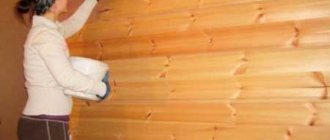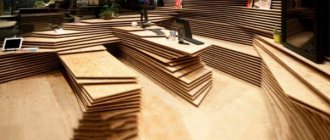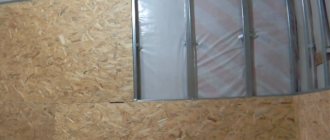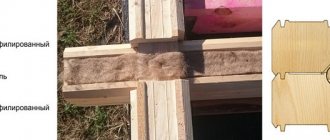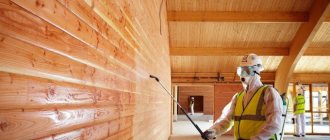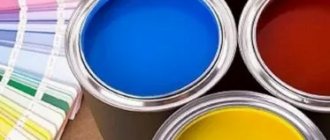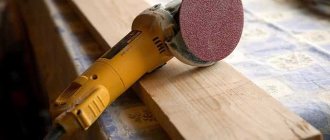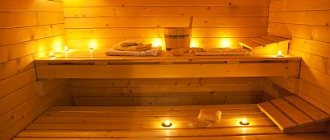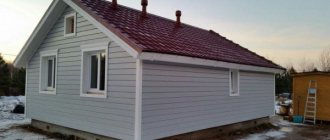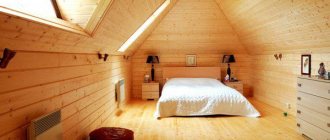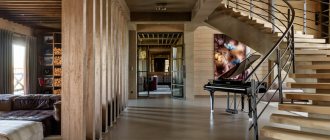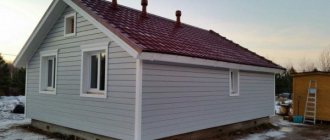Wooden buildings, proven over centuries, are still in great demand on the market today. The production of houses from profiled timber is now becoming especially popular, having significantly simplified the process itself, reduced completion times and significantly increased quality, which has been facilitated by the use of new modern technologies. A material that is unique in its nature, wood makes it possible to obtain environmentally friendly housing, while significantly increasing ease of use and providing a unique appearance.
Features of timber production
With the advent of this material on the market, it has become much easier for St. Petersburg builders working with wood to obtain high-quality buildings.
The parts used in the production of houses from profiled timber are manufactured using a special technology: First, high-quality timber from pine species is carefully selected and sorted. Then the timber is sawed into a carriage (half-timber). Obtaining the necessary moisture content without disturbing the geometry of the tree is possible subject to a complex drying process , therefore, in drying chambers this procedure takes place in a soft mode, lasting about 20 days. The lath is cut into timber. The product is given the required shape. Corner joints are cut, holes are drilled for dowels and electrical wiring, grooves and openings are selected. Antiseptic treatment is carried out. As you can see, the production of houses from profiled timber is a complex process in which every detail matters. The Roshchinsky House-Building Plant company invites you to visit our workshop for the production of building materials from wood. Our specialists will show you how the production process works and tell you about quality standards.
All wooden buildings require regular maintenance - this is a feature of the natural material from which they are built.
Houses made of timber are no exception. In order for a wooden building to last for many years and retain its original appearance for a long time, it is advisable to treat the internal and external surfaces at least once every 3-4 years. There are a huge variety of products for protecting and decorating wooden walls - impregnations, antiseptics, oils, fire retardants. For those who have just started building their own wooden house or garden house, such a variety of means can easily confuse them at first - you won’t be able to figure out what means to use and for what. In this article, experts from the construction company “Besedki-Domiki” will go into detail they talk about how and with what to properly treat a house so that it will delight more than one generation of owners with its beauty and comfort.
Preparatory work
After sanding, the wood absorbs protective compounds better
The compositions should not be applied to old paintwork, dirt, tar or damaged timber. Before treating a wooden house outside and inside, the surface is prepared. Old paint or varnish is heated until softened and removed with a scraper. Then the log house is polished with a special machine. The procedure allows you to remove unevenness and defects, dark spots, and improves the appearance of the material. Removing the top layer opens the wood pores, allowing deep penetration of the impregnation. Grinding occurs with coarse and fine abrasives. After the procedure, the surface and surrounding objects are cleaned with a vacuum cleaner.
How often is treatment required?
The first application of protective and decorative agents is carried out immediately after completion of construction - it is best to do this after the construction of the roof. This primary treatment will become the basis for the longevity of the structure and the preservation of its aesthetic appearance.
It is advisable to carry out repeated and subsequent treatment of external surfaces annually, but at least once every 3-4 years.
For the first time, internal processing is carried out simultaneously with external processing. Repeated is done with the same frequency as the external one. Its main task is fire and antiseptic protection.
When to treat a wooden house
It is recommended not to delay with protective coatings and to paint the house in the first 3-6 months after construction. Before painting, be sure to check the humidity of the walls - manufacturers of paints and varnishes usually indicate 12-15% in the instructions.
Question to a specialist: - Is it possible to paint a house in winter? — Most paints and varnishes are applied at a temperature not lower than 15 °C. If you need to paint a house in winter, we build greenhouses and heat it with heat guns. If the technology is followed, the paint will not dry for long.
Exterior treatment of a timber house after construction
It provides protection against:
- humidity changes (excessive wetting or drying); exposure to sunlight; influence of insect pests; microorganisms, bacteria and fungi.
Most construction companies provide a guarantee for built houses and buildings made of timber only if they are processed in accordance with the requirements of building regulations.
Compositions on almost any base are suitable for treating external walls.
The only exception is flaxseed oil. It is not suitable as a base because it has properties unsuitable for wood - it creates an impenetrable layer through which air does not pass. This subsequently leads to rotting.
There are general requirements for compositions.
Antiseptic (antifungal) and fire retardant (fire retardant) compounds should be well absorbed, penetrating deeply into the wood. Water-based solutions have high penetrating properties.
Moisture-protective and light-protective compounds are designed to create a continuous film on the surface of the timber that allows air to pass through but repels moisture. You can use products on almost any base, including oil. Often these materials are found in combined form, which allows you to avoid wasting time on additional processing.
External walls of timber houses should be treated only at temperatures above 0C. Best - at a temperature of 10-25C, in dry weather. Surfaces must be dry, clean - free from dust and dirt.
The joints of the beams must be cleaned of excess sealant or caulk. Liquids can be applied with rollers and brushes; it is best to use special ones - wide ones with long handles. A convenient and effective method of application is spraying with spray guns - the product will be applied evenly, penetrating into all hard-to-reach places, crevices and joints.
There are rules for the order of processing of external surfaces. By following them, you can achieve the durability of the structure and preserve its appearance for many years:
- antiseptic; fire retardant; light protection; waterproofing.
Tasks for painting walls from the inside:
- The coating protects the wall from dirt and abrasions. The sanded surface is easy to stain - the dirt eats into the wood, and sometimes you have to remove a layer of wood to remove it. It is much easier to wash off dirt from a painted wall.
- Paint is needed to protect against high humidity and direct ingress of water. If it is decided to leave exposed wood in the “wet zone,” then the walls are painted with a waterproof compound or covered with a moisture-resistant impregnation. This technology is used in bathrooms, swimming pools, and kitchen work areas.
- The right shade helps solve design problems. The color of the walls is chosen taking into account the purpose of the rooms: calm shades for bedrooms, neutral shades for common areas, bright shades for the kitchen and living room. It is important not to overdo it with saturation, otherwise the walls can visually reduce the volume of the room.
Bedroom in a house according to the SV-4 project
Processing timber inside the house
It is produced not only to protect wood, but also for decorative purposes.
For this type of work, there is a wide selection of compositions with various decorative properties - transparency, shades. You can also purchase colors - additives to give the walls a certain shade. But of course, it is best not to mask the natural texture and pattern of wood. Transparent compositions that do not change visual characteristics will be optimal. A brief comparative analysis of compositions for internal processing: Natural wax.
Quite an expensive solution, but at the same time it boasts the highest protective characteristics and excellent decorative properties. Not suitable for baths, saunas and surfaces exposed to high temperatures. An aqueous solution of slaked lime and salt. An inexpensive and simple way to protect wood.
Has a slight coloring property. A decoction of oak bark combined with linseed oil. The most labor-intensive method requires repeated re-application and thorough rubbing. In addition, oak bark is not the most common raw material.
This product has coloring quality. Clear or shading varnishes. Creates a glossy surface. Recently, they are losing popularity due to the fact that they “hide” the natural texture of wood under a smooth and shiny layer of varnish. For interior work, there is also a correct order of work. Often, before interior treatment, it makes sense to bleach the darkened areas of the wood. For this, liquids containing chlorine, they are applied in a thin layer.
After 7-10 days, antiseptic and fire-fighting materials are applied. After 2-3 weeks, other products can be applied. Lower crowns, joists, subfloors and other elements that are close to the ground and exposed to dampness should be treated especially carefully with antiseptics. It is also worth paying attention to the walls in bathrooms, kitchens and technical rooms - in the boiler room, closet or pantry.
Stages of log processing
Before impregnating the timber with protective compounds, it is necessary to carry out preliminary surface preparation.
If you are treating an old house, you first need to brush the walls to remove dirt and dust. Then, using coarse sandpaper, remove the previous paintwork, blue areas of wood and fungal formations. Next, the surface is sanded. For a fresh log house, this operation is the first. Sanding is necessary to remove visual defects and for better and deeper penetration of impregnating compounds into the wood.
Processing is performed in the following sequence:
- Impregnation of wood with antiseptic solutions. Impregnation for a wooden house must be applied to the main surface in 2-3 layers, the ends of the logs must be treated at least 4-5 times. Each new layer is applied after the previous one has dried, usually the solution dries for about a day.
- Fire retardant treatment. Fire retardants are applied in 2-3 layers approximately 10 days after antiseptic treatment.
- Surface priming. A primer is necessary to save paint and better adhesion of the dye to the wooden surface.
- Finishing is carried out within two months after processing. It is recommended to adhere to these deadlines; if you paint the log house later, the protective compounds may be washed away by precipitation, and the house will be left unprotected.
Experts advise not to violate the recommended processing order; if you perform work in a different sequence, it is impossible to ensure high-quality and reliable protection of the wood.
It must also be remembered that after treatment, the wood becomes protected only for a certain time; no product guarantees eternal protection of the wood. Treatments must be carried out regularly; the outer surfaces of a wooden house must be impregnated with antiseptics every five to seven years.
How to protect timber before construction and during long-term storage?
It happens that building materials are already on the site, and construction work has to be suspended. If at production and procurement sites the timber is stored under certain conditions that meet the safety requirements, then it is not possible to create such conditions on the site.
In this case, it is necessary to fold and pack the lumber so that it is protected from moisture and exposure to direct sunlight. Polyethylene film is not suitable for such purposes. It retains moisture and does not protect against ultraviolet radiation from the sun.
Here are some recommendations for storing wooden beams on site before construction:
- The storage area must be level and dry, where puddles do not form during rain and melt water does not accumulate; The distance from the ground to the first bottom row must be at least 25-30 cm; Stack the beams in several rows, the total height of the stack is no more than 1 .5 meters; Place transverse wooden spacers with a thickness of at least 3-4 cm under each row; Maintain a distance between the beams of at least 5-6 cm; Cover the stack with a thick tarpaulin or wrapping paper; Do not use polyethylene, including foam (“mat” tourist”), cling film.
By following the simple recommendations described above, you can easily extend the life of your building for many years, preserve its aesthetic appearance and allow even your grandchildren and their children to enjoy the comfort of using a house made of environmentally friendly material. Fortunately, houses made of timber can last over 50 years if properly cared for.
A special feature of houses made from wood building materials is the need for regular maintenance of wooden surfaces. This also applies to external walls, which are best treated in a timber house immediately after the roof is completed.
This procedure should be repeated periodically (ideally annually), preferably in the spring, when the temperature rises above 0°C. But in order to achieve the required degree of protection, you need to understand how timber is treated when building a house inside and outside. For this purpose, materials with different properties are used to ensure the best quality in specific conditions.
What has a detrimental effect on wood?
Among the most important enemies of wood, it is worth highlighting moisture in all variants. Rain, snow, steam destroy the structure of the fibers, and mold begins to appear. Such exposure significantly reduces the service life of even the highest quality wood. This is why wood impregnation should be used.
Ultraviolet exposure does not affect the structure of wood as much. The timber does not rot under the sun's rays, but its appearance is lost. The top layers of the material begin to darken, acquiring a gray, dull color that no one likes.
An equally important factor is the moisture content of the wood. For the construction of houses, it is necessary to use dried and prepared timber.
But in practice, houses are built from under-dried material, which, after drying, begins to deform and burst. Taking into account all the factors, we can say that processing a wooden house is not only recommended, but is mandatory.
How to treat the outside of timber houses after construction
Treating a timber house after construction provides protection from:
- excessive changes in humidity (wetness or dryness), solar radiation, biological pests.
Many construction organizations do not provide guarantees for timber houses they have built, which the customer has not properly treated after assembly.
Before treating a new house made of timber, you need to know that to cover the external surfaces of the walls, you can use materials based on any base, except linseed oil. It creates a dense layer that does not allow air to pass through, which leads to wood rotting. At the same time, antiseptic and fire retardant compounds must penetrate inside the wall structure, and light and moisture protection compounds must create a strong, dense continuous film on its surface.
A better result can be achieved by properly treating a house made of profiled timber:
- first with an antiseptic, then with a fire retardant, then with light protection, and finally with waterproofing.
When deciding which antiseptic to treat a house made of timber from the outside, it is necessary to take into account the degree of its absorption by the wood. Water-based solutions have the best absorbing qualities.
Therefore, fire retardant and antiseptic compositions should be exactly like this. As for light and water protective compounds, they can be on any basis, including oil. Often these materials are combined to speed up processing, for example, making light-protective mixtures, which are a rational choice than treating a house made of timber from the outside.
How to correctly calculate the cost of funds
Industrially made impregnations for log houses are usually sold in the form of a powder or concentrate, which are then diluted with water. The diluted solution is 5-10 times the original volume of the product. For example, from a 5-liter canister you can get about 50 liters of ready-made antiseptic.
The calculation of the product required for treatment is based on a standard consumption of 0.3 liters per 1 m2 for one treatment layer. If you perform a simple calculation, you can calculate that 1 liter of concentrate will be used for a single treatment of an area of 60 m2. Thus, one five-liter canister will be enough for three-layer treatment of a house with an area of 100 m2.
How to treat timber walls inside a house
It is most rational to use compounds with varying degrees of transparency for interior decoration of a house. In this case, the surface texture is emphasized and, if necessary, its shade is changed.
Therefore, the materials used for antiseptic and fire protection should not change the visual perception of the wood pattern. Internal and first external treatments are performed simultaneously. After 2 weeks, the interior walls can be covered with the remaining protective and finishing materials.
The following can be used as means to treat the walls of a timber house inside after construction:
- natural wax (high cost), a mixture of slaked lime and salt diluted in water (at the same time colors), a decoction of oak bark mixed with linseed oil (requires careful rubbing), colorless or shading varnishes (create a smooth shiny surface).
An important operation in the process of treating the inner surface of timber walls is bleaching, which allows you to get rid of blue and gray areas. These products are made on the basis of chlorides and are applied in a thin layer. In this case, you can begin the subsequent stages of processing in a week.
Particularly thorough antiseptic treatment should be carried out on the lower crowns, floor joists, subfloor and other elements located next to the foundation and soil.
This proximity makes them most susceptible to dampness. A humid environment is a source of intensive reproduction of insect larvae. And the only way to make structural wood unsuitable for their life is to treat a timber house with an antiseptic.
Types of materials
To protect the timber inside the home, several preparations with different properties are applied sequentially.
Fire retardants
Chemicals once applied to the surface of wood significantly reduce its flammability. Fire retardants according to their mechanism of action are divided into two groups:
- Products that release non-flammable gases that block the access of oxygen to the surface of the wood. The base is ammonium sulfate or ammonia.
- Compositions containing low-melting salts of boric, orthophosphoric or silicic acid. They increase the combustion temperature and cover the wood with a fire-resistant film.
Fire protection products are available in the form of paints, varnishes or impregnations. Preparations of the first group of effectiveness best resist fire.
Antiseptic drugs
Compositions with antiseptics prevent the proliferation of fungal spores and mold, which cause allergies and bronchial asthma. They are created based on water, oil or organic solvent. For interior work, water-soluble products and products based on natural oil (linseed, hemp) are allowed. Depending on the type of action, there are two types of drugs:
- Impregnations - penetrate several centimeters deep into the wood, destroy existing microorganisms and prevent their further appearance.
- Film-forming compounds form a protective coating on the surface that does not allow moisture and biological pests to pass through.
Compositions for internal use are transparent (glaze) and covering. They give the wood the desired color. To change the tone of the timber while maintaining the structure of the wood, use a tinting antiseptic (stain).
Biopyrenes
Complex action preparations have antiseptic and fire retardant properties. They are approved for use in residential premises, children's and medical institutions. The compositions destroy fungi and insects and prevent their appearance. They are designed for processing hardwood and softwood timber.
Primer
Products with an antiseptic effect are used as a preliminary coating for surfaces before painting or applying varnish. They penetrate deeply into the wood structure and reduce the consumption of paints and varnishes.
Whitening products
Blue spots often form on timber and logs. This is one type of fungus that is difficult to remove. The damage is removed by sanding, but bleaching compounds completely eliminate it. Based on the main component they are distinguished:
- Chlorine-containing preparations are effective, but they are harmful to health and are used for external treatment.
- Based on active oxygen, the composition is safe, perfectly brightens and disinfects wood.
- Oxalic acid is a less effective remedy recommended for soft wood.
Bleaching agents are applied according to the instructions, left for the specified time and washed off if required by the manufacturer. To prevent subsequent infection, a deep penetration antiseptic is applied.
How to protect timber before construction?
If it is impossible to begin work on assembling a log house immediately after manufacturing a set of beams, it is necessary to ensure their proper storage, which for lumber consists of using moisture-proof packaging. To do this you should:
- stack the beams in a stack using wooden supports-linings between each row; there should be a distance of 5 cm between adjacent beams in a row; the stacked stack is covered with a tarpaulin or wrapping paper.
The ground in the storage area must be level to prevent puddles from accumulating under the beams. It is not recommended to use polyethylene film as packaging material, which does not provide protection against UV radiation from the sun. Fulfillment of these conditions will prevent the appearance of mold on stored wood from excess moisture.
Other articles
Our projects
Beautiful and comfortable wooden houses made of wood continue to be the undoubted leaders of environmentally friendly and relatively inexpensive housing. Depending on the purpose, capabilities and budget, you can build a house from a log frame or laminated veneer lumber.
Wooden buildings are not only easy to construct and operate, but also durable. At the same time, wood is an excellent material both for the construction of light country houses and for solid houses intended for permanent residence.
Modern technologies can significantly reduce construction time, without additional time and financial costs. But owners of houses made of laminated veneer lumber should remember the need for special treatment.
Ignoring this process can lead to damage to the wood and destruction of the house. It is worth noting that basic adherence to the simplest recommendations will extend the life of the house and avoid complex repair work.
Neomid Thor Plus
Neomidator Plus has an aqueous composition, which includes synthetic copolymers and various auxiliary substances. It is intended to provide protection for the ends of logs, beams and other dimensional materials, both individually and in ready-made structures, such as bathhouses, houses, gazebos, etc. This composition prevents the occurrence of rotting and cracking of wood during drying of the material. After treatment with Neomid Tor Plus, a thin elastic coating is formed on the surface of the log structure, which will provide good water resistance and vapor permeability. Thus, the wood will not accumulate excess moisture. The structure of the wood will not change after processing.
Glued laminated timber - features and advantages
In recent years, the stereotype that laminated veneer lumber is inferior in its environmental characteristics to wooden beams has been completely destroyed. The vast majority of land owners choose this material, which differs:
- Loyal pricing policy. Excellent quality. Simple processing. Ethical appearance. Environmental friendliness and reliability.
In addition, houses built from laminated veneer lumber can be used immediately after construction, without waiting for shrinkage, as should happen with houses made of logs.
The technology for producing laminated veneer lumber is quite simple and allows you to preserve all the qualities of natural wood. As a rule, manufacturers use material that is not of high quality, such as spruce or pine. The logs are cut into slats and treated with special protective agents. Specialists make sure that the fiber lines do not coincide when laying out, and glue them together using a special press.
Despite the fact that the technology for manufacturing laminated veneer lumber involves initial processing, after completion of construction work, it is necessary to carry out a number of procedures aimed at protecting both the external and internal parts of the house.
Recipes of our grandfathers
We didn’t come up with ways to protect wood.
Our ancestors knew how to preserve what was built to last, without resorting to expensive means, but using what was at hand.
Eg:
- Waste from various oils (linseed, hemp, machine) is perfect for treating walls. The only thing you should exclude is sunflower; on the contrary, it will attract insects.
- Firing with a blowtorch. The procedure helps to clog the wood capillaries and stop the movement of moisture through them. As a plus, there is also a pleasant shade of the walls, with the effect of noble types of wood.
- Tar, bitumen or tar. The material is highly flammable, so it can only be applied to those parts that are dug into the ground. For example, pillar posts.
- Copper sulfate will repel insects and prevent mold from developing.
- Drying oil heated to boiling. Absorbs tightly, forming a safe film for many years.
- The gaps between the crowns can be rubbed with a mixture of manure and clay. The method is not the most aesthetic, but it is cheap and practical.
Reasons for home treatment
Timely measures to protect wood should be taken to protect it from the negative influence of an aggressive external environment. At the same time, it is generally accepted that the external part must undergo mandatory processing, while the internal part is more of an aesthetic nature. However, not all experts share this point of view, recommending comprehensive processing:
- Applying antiseptic to laminated timber. Using fire retardant. Carrying out painting work.
If during construction the walls inside the house were not additionally insulated with materials such as lining or drywall, the ideal option would be to use varnish. As an alternative, you can choose paint, but this will negatively affect the aesthetic appearance of the house and will make it difficult to create a unique interior typical for houses of this class.
When initially choosing a material such as wood for your home, you should understand that this beautiful material, gifted by nature, is in itself an element of decor and it is at least impractical to hide its advantages. When carrying out painting work, it is important to emphasize the advantages and uniqueness of wood and preserve the naturalness and naturalness of color as much as possible.
Wood bleaches
Bleach is used to treat already infected wood and prevent it from darkening. They come in different types; in Russia they usually use chlorine, oxygen, oxalic acid-based and combined ones. Their task is to neutralize the infection and decay that has begun. It must be remembered that even high-quality wood materials that have been dried and processed in a factory can develop fungi if they are stored outdoors. However, this may not affect the appearance. But the wood will continue to deteriorate after construction. Therefore, experts recommend treating all materials that will be stored for a long time with bleach for prevention.
Glued laminated timber processing technology
The technology for processing a house made of laminated veneer lumber should be understood as creating a decorative layer that will protect the wood from:
- The appearance of mold. The appearance of fungus. Inevitable mechanical damage. The influence of an aggressive environment.
Particular attention should be paid to processing by owners of houses that are used seasonally or intermittently. For example, mold often appears in country cottages caused by high humidity.
As a rule, the processing of the external walls of a house made of laminated veneer lumber occurs in several stages. Since this is a very lengthy and labor-intensive process that requires certain skills and abilities, it is best to involve highly qualified specialists who provide a guarantee for all types of work. It is worth noting that the pricing policy that guides construction teams may vary depending on the deadlines, the materials used and the characteristics of the region.
At the same time, high-quality treatment of external walls must necessarily include the following steps:
- Removing lint from wood. Treating the walls of the house with an antiseptic. High-quality sanding. Primer of surfaces. Final painting.
An attempt to save money by eliminating any process will inevitably lead to damage to the wood and premature deterioration of the condition of the house.
The problem of excessive timber moisture
Wood is a living material, and even after cutting down the tree itself, biological processes in it do not stop . Unfortunately, one of these processes is rotting.
Professional builders know very well that a log house requires wood that has been dried to the required moisture content. However, the main problem is that the house is not built in one or two days. However, lumber, logs and other lumber are usually stored in an area where they can be exposed to the environment: rain, hail, wind or simply heat and humidity.
All these conditions increase the level of moisture in the wood, and rotting processes begin to develop there. Because of this, it is urgently to treat the materials with anti-rot agents, because the fungi that cause this process feed on substances contained in the wood and gradually destroy its structure.
There are a lot of products that protect wooden materials from rot and mold, all of them can be divided into 3 types :
- impregnations that contain antiseptics;
- bleaches;
- preservatives
What is their difference? In methods of exposure and methods of application.
Useful tips
Sanding timber walls is a labor-intensive and painstaking process. To ensure high-quality and long-lasting results, the following rules are followed in our work:
- Timing
. Sanding is carried out after completion of the drying process (for profiled timber), before installing windows and doors, and before installing a clean floor and ceiling. The limitation is due to the dustiness of the work. - Preparing the walls
. Before sanding the timber inside the house, remove the resin that has appeared on the surface. The work is completely manual: the resin is removed with a scraper or other suitable tool, and the resin pockets are treated with a solvent. This moment is an important stage in preparing the walls for sanding - the resin can very quickly render the abrasive unusable, clogging its structure, and besides, the remaining resin will not allow the paint to lie flat on the wall. - Technique parameters
. A grinder used for processing timber walls must have a power of at least 1 kW. The operator, working on a weaker machine and trying to involuntarily speed up the process, can increase the pressure. As a result, grooves remain on the surface, which are not easy to remove.
An industrial hair dryer melts the remaining resin from a resin pocketSource starkwood.ru
- Working methods
. In order for sanding to proceed smoothly and give a high-quality result, the stroke of the sanding machine and the direction of the wood fibers must match. - Work planning
. Sanded wood quickly loses its freshness and darkens, which can affect the quality of the future paintwork. To avoid having to repeat sanding (and waste additional time and money), you should stock up on paint in advance.
Expenses should be taken into account at the project stage
It is profitable to order a ready-made standard project for the construction of a cottage from timber with reference to the region. It is up to the designer to select from savings on the network and adapt the technical design to the request. What are the advantages of the project:
- Get a detailed cost estimate for materials, components, and work costs;
- Issues of material shortages or sale of remaining surplus will not arise;
- Detailed drawings and subassemblies will lead you out of the maze of errors;
- Transport costs are optimized;
- Laying pipes and cables will not cause any difficulties;
- The maximum cost of a standard project is 20 thousand rubles.
But the implementation of the idea depends on the need to hire a team of qualified carpenters. The level of responsibility, skill of specialists and the seriousness of hidden defects will become clear during the first wintering.
What should an ordinary person, inexperienced in construction, decide to build a warm house from profiled timber with his own hands? Order a house kit from a local house-building plant and save a significant amount of money with this step and speed up your move-in date.
Essentially, a house kit is a kit for the builder. The profiled timber is cut to size, the dovetail type connecting locks are made without gaps using precise factory equipment, which eliminates the appearance of cold bridges.
In the attached video, craftsmen use a chainsaw for this purpose. But are they capable of reproducing the precision of a machine production line? It can be seen that the cuts were made approximately, with a margin. Will they definitely caulk or foam the inconsistencies in the cuts? Doubt encourages self-building. And the cost of the work will amount to no less than factory processing.
Video:
Do-it-yourself house made of profiled timber
The benefits of purchasing a house kit made from profiled timber
A technological worker has replaced a carpenter - that’s what machining means.
The developer is limited in time, looking for an opportunity to reduce the cost of building a timber house. Let’s look point by point at whether the costs of cutting and sampling are reasonable:
- You receive chamber-dried wood with 10–16% humidity in sealed bags;
- End processing with film-forming stabilizer INDULINE. This means that the main channel for moisture absorption is blocked, the web of cracks will not disfigure the cut;
- Each part is numbered, the instructions indicate the location of assembly;
- Adjustments and modifications are excluded, time is spent only on the process of assembling the house;
- Check prices at wholesale stores per cubic meter of long profiled timber. It turns out that the cost of a similar unit of a house kit is the same or up to 10% more expensive - this is where the benefit is hidden;
- A set of timber for a house with an area of 120 m2 will cost approximately 650,000 rubles, for 190 m2 – approximately 950,000 rubles;
- The average assembly cost will be 25% of the cost of the timber. Manage the reserve fund at your own discretion;
- The thickness of the log house will be offered according to the climatic zone: the common size of timber 150 x 150 mm is suitable for Voronezh. In Siberia, wall thicknesses less than 220–250 mm are unacceptable;
- Installation will speed up twice;
- The material is 100% treated with antiseptic and fire retardant.
100% complete from base to ridge, this is the construction service
Video:
Ready-made house kits from the manufacturer
Preparations for complex treatment
When using such preparations, the tree is protected simultaneously from several negative processes in one treatment.
What can be used from what is available on the market:
- Senezh Ognebio. The product copes with biological damage, insects and fire. The principle of operation is penetration into the wood.
- Phenylax. The product protects against fire, mold and mildew.
Please note that the best effect from wood treatment is achieved after at least two treatments. This creates not just one layer, but several, and the product is accurately distributed throughout the material. This rule applies to all drugs described in the article.
